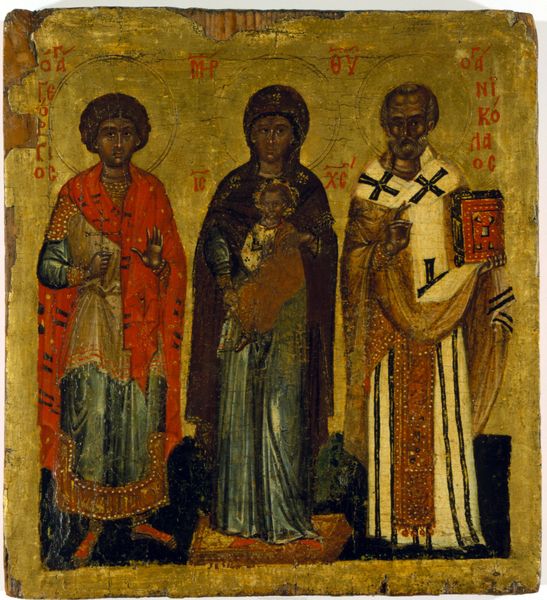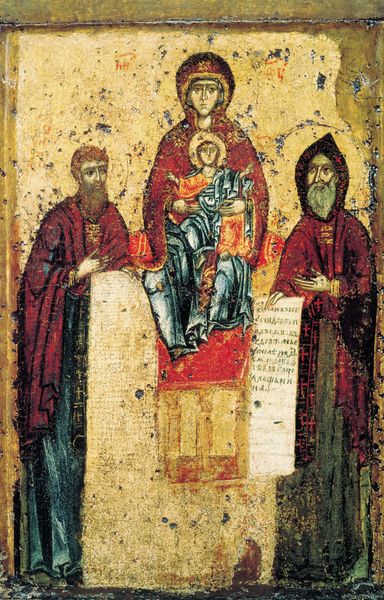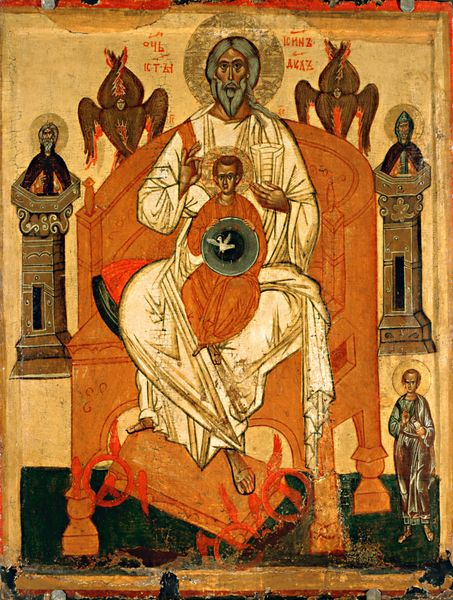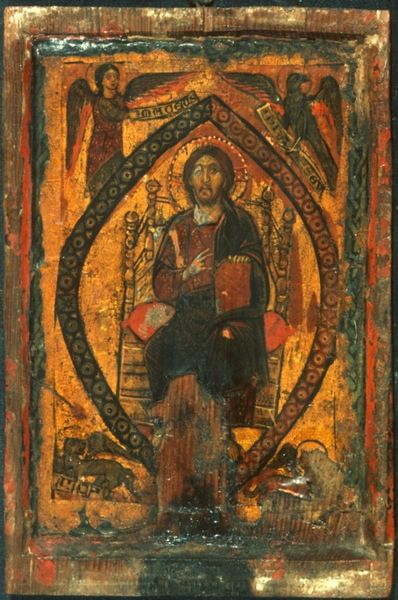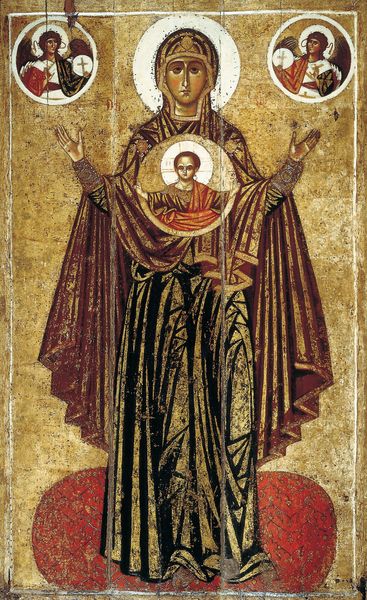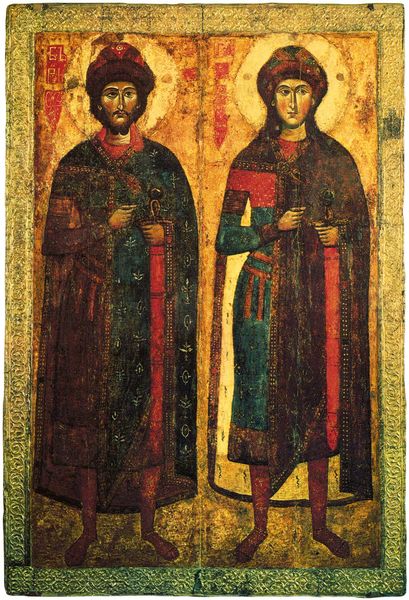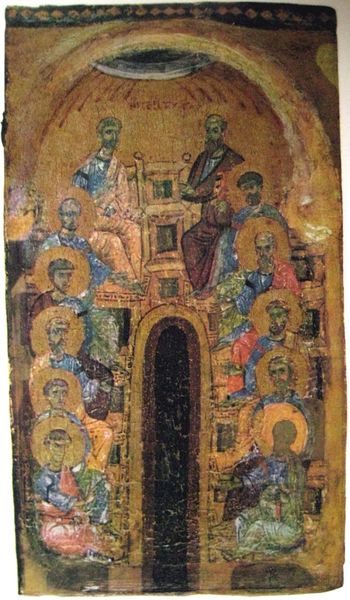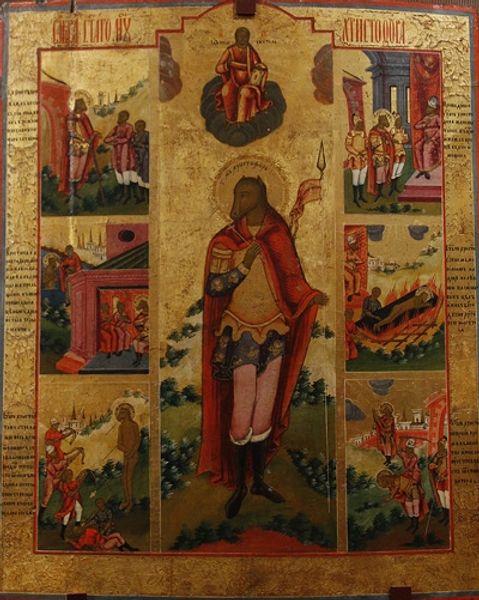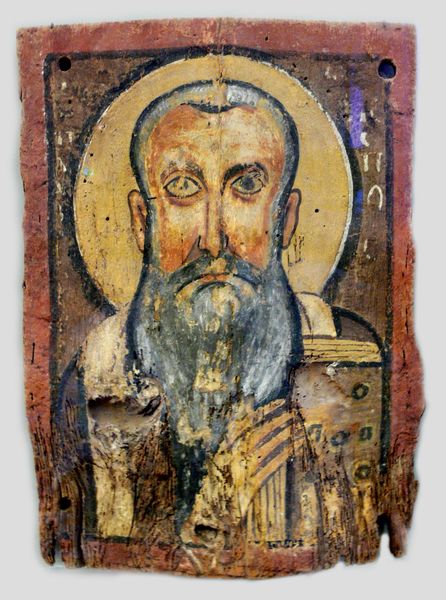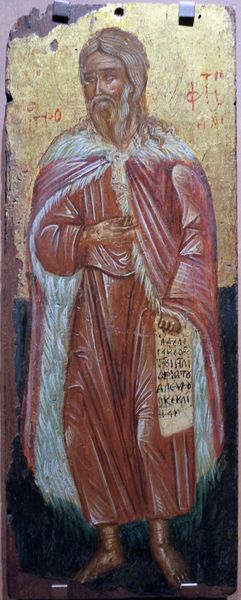
tempera, painting
#
portrait
#
byzantine-art
#
medieval
#
tempera
#
painting
#
figuration
Dimensions: 108.7 x 67.5 cm
Copyright: Orthodox Icons,Fair Use
Curator: Let's turn our attention to "John Climacus, George and Blasius," a tempera painting dating back to around 1300. It resides here at the Russian Museum. What strikes you most about its visual presence? Editor: The overwhelming sense of hierarchy. Look at how John Climacus towers over the other figures! It’s not just size, but the austere coloration focused on him that draws the eye immediately, even dominating the whole piece through symbolic means. Curator: Precisely! The composition establishes a clear visual and iconographic language. Notice how the central figure is framed in the iconic Byzantine style, very flat, not concerned with realism at all, while figures flanking him adhere to certain constraints related to relative importance, with respect to scale. The manipulation of form serves narrative ends. Editor: What interests me more is the raw materiality. The wood seems worn, almost rough around the edges, indicative of a sacred object perhaps handled for centuries by many sets of hands in repeated communal actions. How was such material availability and knowledge controlled by monastic communities at the time? It reveals the whole system that supported Byzantine artistic output. Curator: Interesting point about the wood itself acting as an expressive element. However, the careful, deliberate layering of tempera provides so much visual depth; the crimson background especially. Notice how it isn’t just a flat color, but almost seems to vibrate. Editor: Crimson was more than mere color, of course. Consider the social dimensions to acquiring such pigments, maybe deriving from precious minerals ground laboriously by hand by people involved with icon creation. And even look at the subtle cracks that developed in time – these can also be read as “documents”. What stories of devotional labor might those signs carry? Curator: Indeed, you offer an intriguing interpretation. I still maintain it's vital to understand the formal framework. The lines, geometric haloes, the placement and scale relationships that build this three-figure pyramid. Ultimately, the intent of the artist to deliver certain impressions to audiences that have to decipher, read, and be moved by the imagery through compositional relationships is what I return to in such pieces. Editor: I’ll keep pondering those hidden hands—or perhaps not so hidden after all— that labored behind this captivating icon, making a real difference for all the other visual relationships we now admire.
Comments
No comments
Be the first to comment and join the conversation on the ultimate creative platform.
